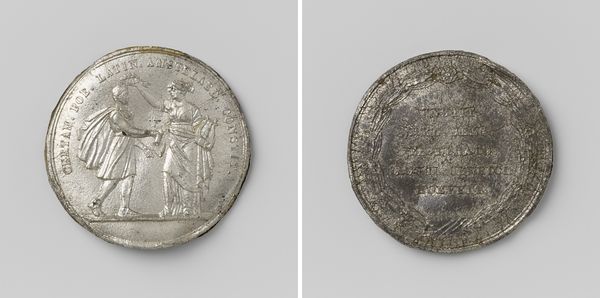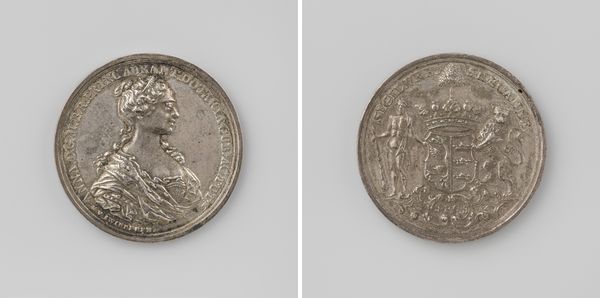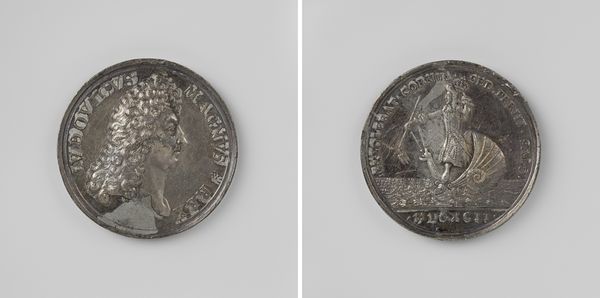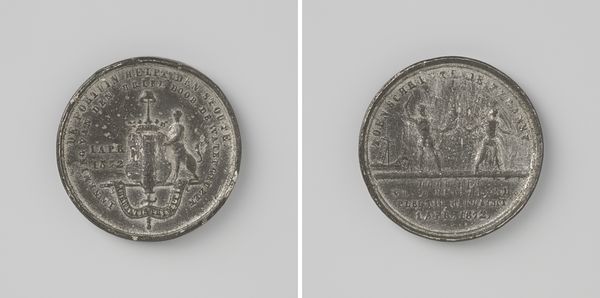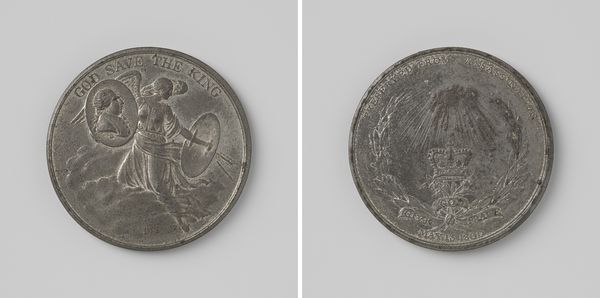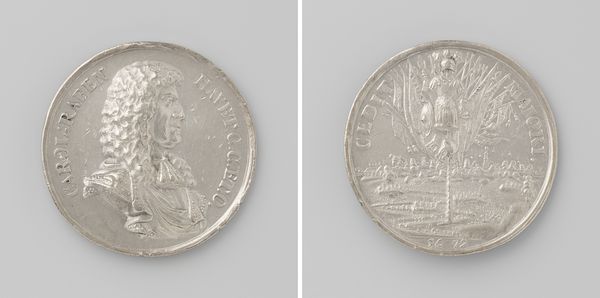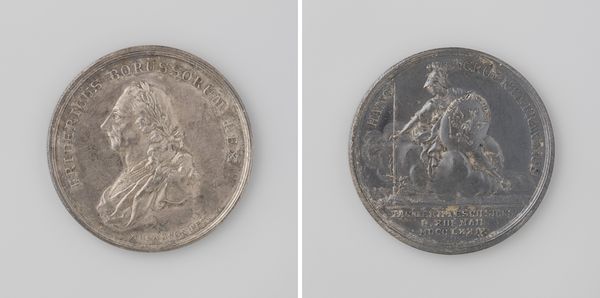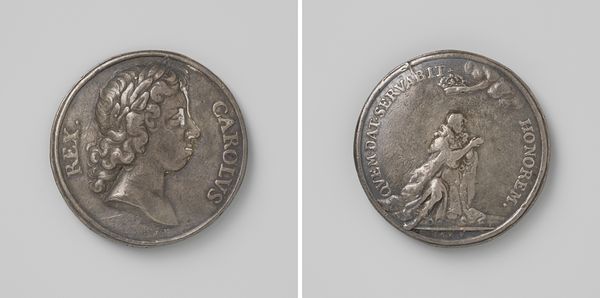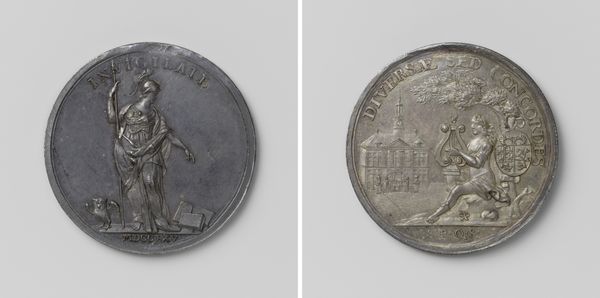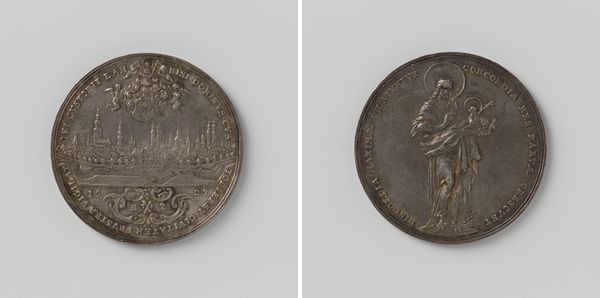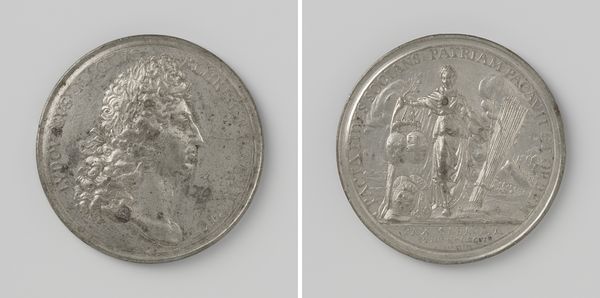
metal, relief, sculpture
#
portrait
#
baroque
#
metal
#
relief
#
sculpture
#
history-painting
Dimensions: diameter 4.2 cm, weight 33.70 gr
Copyright: Rijks Museum: Open Domain
Editor: Here we have "The Death of Sir Isaac Newton" a metal relief sculpture made by Jean Dassier in 1727. It feels like a coin, almost a commemorative token. I’m curious, what story does it tell beyond just being a portrait? Curator: This work embodies the burgeoning "cult of personality" around scientific figures in the 18th century. Newton’s death became a moment for national mourning and the artistic representation of that grief became important. Dassier, a noted medalist, presents Newton not simply as a scientist, but as a kind of enlightened hero. Notice the allegorical scene on the reverse side. Editor: I do, there's what appears to be his body and… angels? Curator: Precisely! This alludes to Newton's "apotheosis" or elevation to divine status. The theatrical staging, typical of the Baroque style, contributes to this effect, framing Newton's legacy as something almost sacred. The metal medium itself signifies permanence, suggesting that Newton’s impact will endure. Think about how different this public commemoration is, compared to honoring rulers or military leaders. What does this say about societal values at the time? Editor: So, it's not just a portrait, it's a deliberate elevation of a scientist into a heroic figure. It makes me wonder who controlled the narrative around science, even then, and why. Curator: Exactly! It encourages us to think about how institutions like the Royal Society, or influential patrons, shaped the public's perception of science and its leading figures. It also emphasizes the social construction of genius itself. This medal reminds us that even scientific legacies are molded by the politics of representation. Editor: I never considered how much the art world influences science’s public image. Now I'm wondering, how much is genuine public admiration, and how much is manufactured sentiment? Curator: It’s a crucial question to keep asking. The past isn’t some objective reality we simply discover, but something we build through representation. And representations always serve somebody’s purpose.
Comments
No comments
Be the first to comment and join the conversation on the ultimate creative platform.
